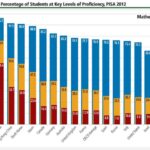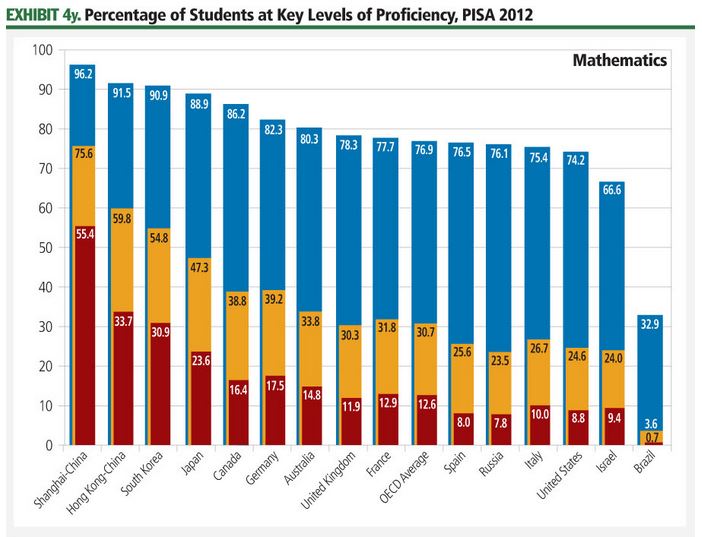Australia
2013 – PISA


Trends in international primary and secondary STEM education can be compared across countries using two widely respected international exams. The Programme for International Student Assessment (PISA), carried out by the Organisation for Economic Co-operation and Development (OECD) every three years, focuses on the capabilities of 15-year-old students in mathematics and science literacy.
2013 – Other Space Employment
Not all countries collect or distribute data on agency or industry employment on a regular basis. This makes it difficult to determine trends in the global space workforce outside of a few major groups. Exhibit 4x provides a snapshot of employment in a number of space agencies in 2013. This gives some measure of the approximate size of the space programs in these nations.
2012 – Ground Observatories, Astronomy
Astronomers are laying the groundwork for a new generation of extraordinarily large observatories. The Square Kilometer Array (SKA) Telescope will be the world’s largest and most sensitive radio telescope ever built. The SKA takes its name from the combined size of the collecting area of the thousands of individual dishes that comprise it, making it far more sensitive than any existing radio telescope.
2012 – Additional Country Space Budgets
Around the globe, many smaller nations—in economy or population size—are investing in space projects or programs. These emerging space states generally feature relatively small-scale investments in space applications linked to specific national socioeconomic development objectives. The exhibit for additional/emerging countries shows the most recent available yearly budget for civil space activities in selected emerging space states. Each country tends to feature a different focus in its space investment portfolio, so care must be taken in making generalizations.
What’s Black, Brown, and White and Can be Seen From Space?
Earth observation satellites can facilitate wildlife surveys over large remote areas. A group of researchers from the University of Minnesota’s Polar Geospatial Center, the Scripps Institution of Oceanography, and the Australian Antarctic Division applied advanced image processing techniques to high-resolution satellite images taken of emperor penguin colonies to estimate their total population.
Satellite Pictures of Volcano Keeps Aircraft Safe
In June 2011, the eruption of the Puyehue-Cordón volcano in Chile led to the evacuation of 3,500 people. Satellites were able to capture images of the eruption and provide details on the associated ash plume, monitoring its path for many days.
2011 – Ground Observatories, Astronomy – Snapshot
To improve the resolution from ground-based observatories and to capture light from distant, dim objects, telescopes are growing larger. Due to the correspondingly large cost of construction and operation, these massive telescopes are often supported financially by multinational consortia.
2011 – BeiDou – Snapshot
Since 2000, China has also been building its own national PNT system, known as Beidou (the Mandarin name for the constellation otherwise known as the Big Dipper). China launched ## satellites in 2011 to join the ## currently in orbit. These satellites will later become part of a global constellation, Compass, which is planned to consist of ## MEO satellites for global coverage and ## GEO satellites that will focus on regional coverage over China. Beidou began operating in December 2011, providing initial PNT services to a swath of the Asia-Pacific region from Australia in the south to Russia in the north with an accuracy of 25 meters (82 feet).
2011 – South African Government Space Budget – Snapshot
Space activities in South Africa are funded through the Department of Science and Technology (DST). In FY 2011, which ran from April 2011 to March 2012, the DST planned to spend ## million rand (US$## million) on space activities executed through two programs: the South African National Space Agency (SANSA) and the Space Science Research, Development and Innovation subprogram. SANSA, established in 2008, planned an FY 2011 budget of ## million rand (US$## million).
2011 – Space Policy: Programs and Progress Snapshot
As space activities across the globe become more dynamic—blending commercial, government, and cross-border activities—governments increasingly see a need for a formal space policy to provide a framework for coordination and integration of activities. Effective space policy can foster public interest… Thank you for visiting The Space Report! The Authoritative Guide to Global Space Activity, Packed…